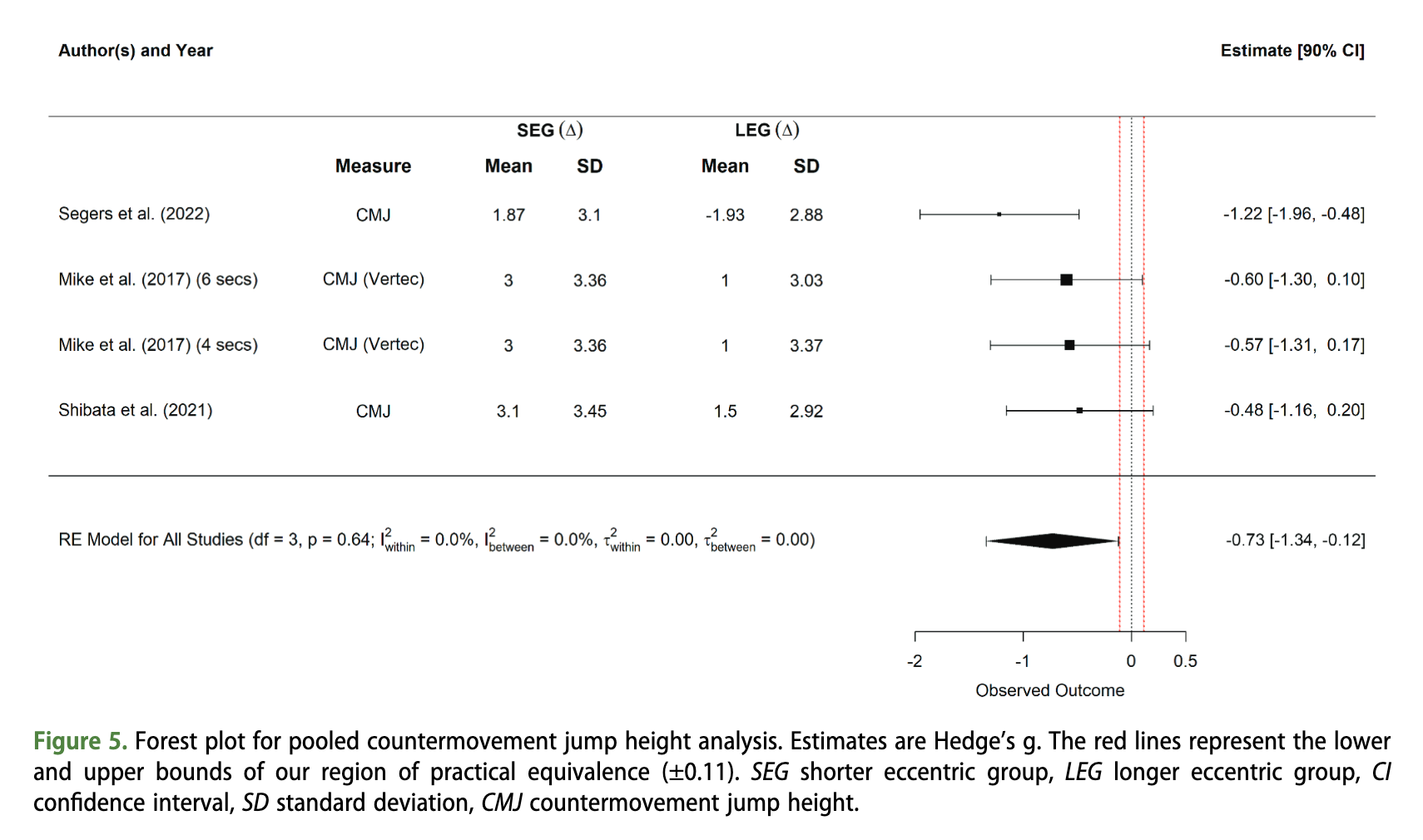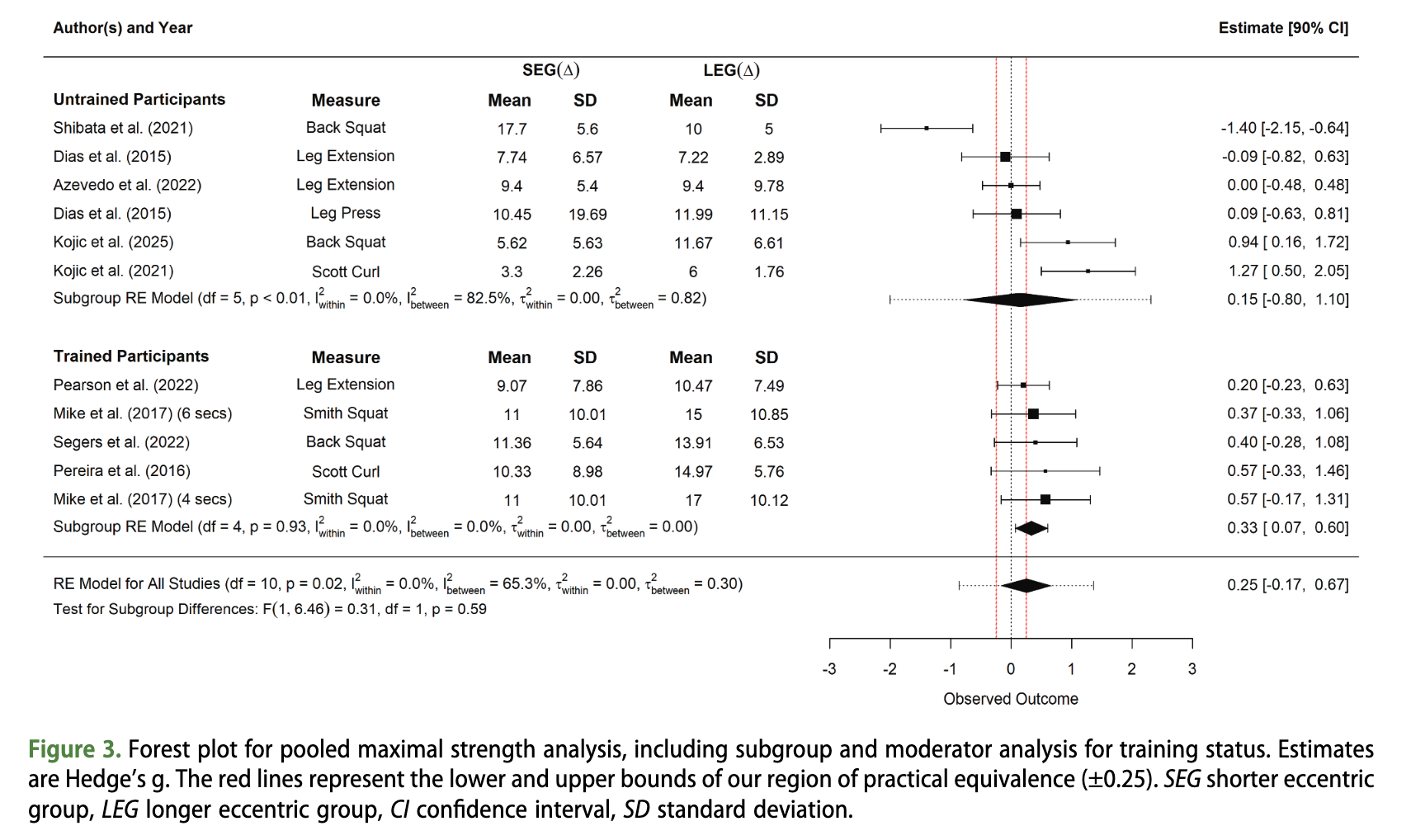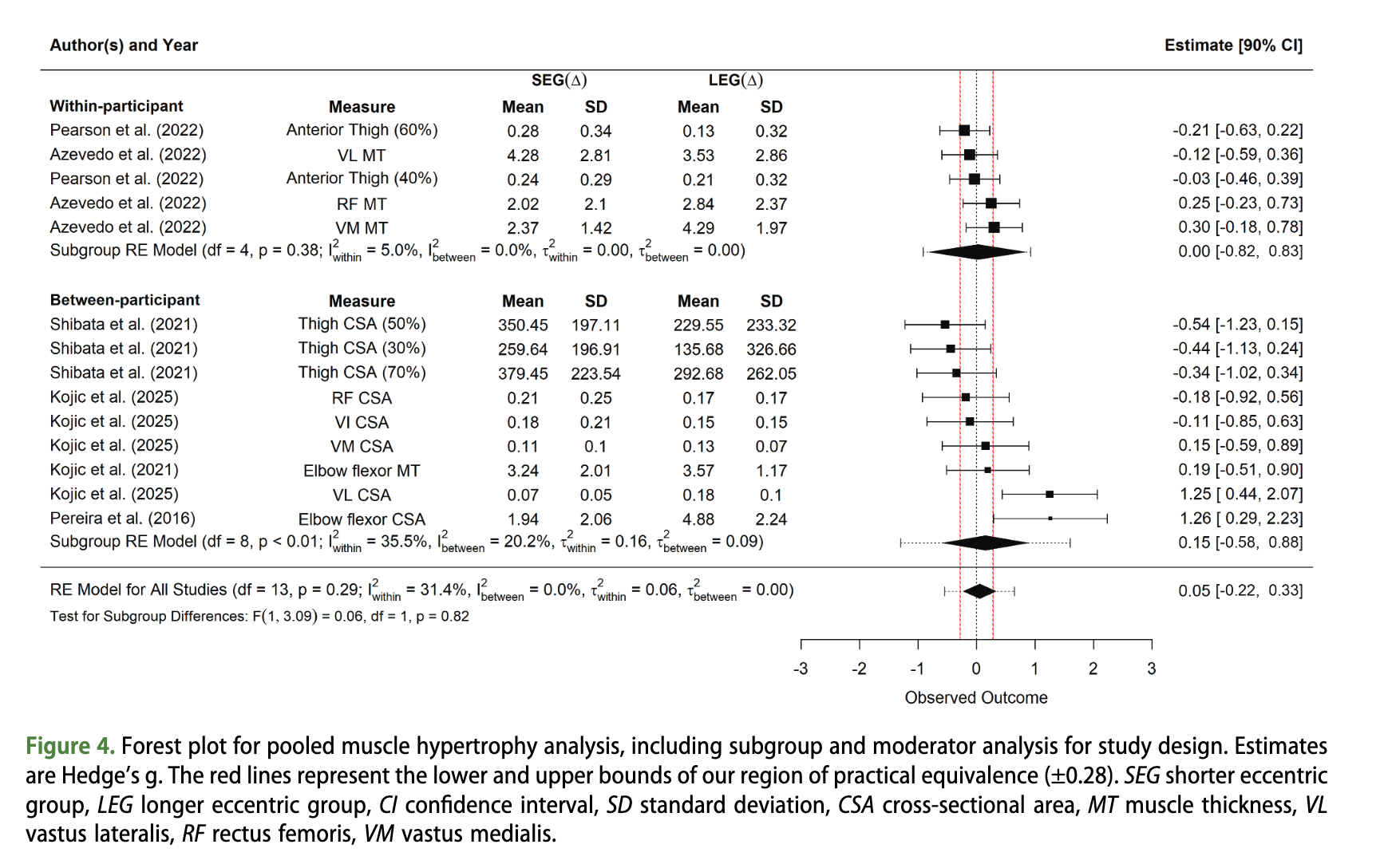Coaches often manipulate tempo, yet evidence on eccentric duration is mixed.
This meta-analysis isolates the eccentric phase (shorter, ≤2 s, vs longer,>2 s) to examine its effects on strength, hypertrophy, and CMJ.
Is slowing down the eccentric to 3–6 s instead of 1–2 s better for strength, hypertrophy, or jumping higher?

What Did the Researchers Do?
The researchers performed a systematic review of the literature on eccentric duration, which included:
- 9 studies, n=166 participants, 4–12 weeks of training, mostly twice weekly.
- Compared short eccentric (SEG: ~1–2 s) vs long eccentric (LEG: ~3–6 s) with other phases matched.
- Outcomes of 1RM strength (various lifts), hypertrophy (US/MRI), CMJ.
- Subgroups of trained vs untrained, volume-load matched vs sets-to-failure, single- vs multi-joint.
The authors used a multi-level random-effects model with robust variance estimation and a region of practical equivalence to judge “worthwhile” effects.
What were the results?
CMJ
- Short eccentrics improved CMJ by a practically worthwhile amount (large-to-small range favoring SEG).

Max Strength
- Maximal Strength (overall): Small average effect favoring long eccentrics, but estimates were uncertain across contexts.
- Maximal Strength (trained or volume-load matched): Long eccentrics produced similar or higher strength gains with moderate certainty.

Hypertrophy
- Practically trivial average differences with uncertainty. Both approaches can work.

What Does This Mean?
- Explosive tasks ⮕ If you care about CMJ or SSC qualities in the short term (4–6 weeks), keep the eccentric short (≈1–2 s or fast-but-controlled).
- Strength in trained athletes ⮕ A longer eccentric (≈3–4 s, not excessively slow) can be as good or slightly better, especially when volume-load is matched.
- Size gains ⮕ No clear winner; program to athlete preference, fatigue tolerance, and global load management.
- Programming lens ⮕ Longer eccentrics raise time-under-tension and per-rep effort, which may allow lower volume-load for a similar stimulus in trained lifters.
Limitations
- Small samples and heterogeneity across protocols and tests.
- Short interventions (4–12 weeks), so long-term adaptations are unknown.
- Most CMJ data comes from a small number of studies.
Coach's Takeaway
- Want jump improvements? Use short eccentrics on primary SSC lifts.
- Trained athlete seeking strength? Consider 3–4 s eccentrics in blocks, especially when volume-load is tightly managed but the benefit is not clear nor compelling.
- Hypertrophy block? Either approach works.
I hope this helps,
Ramsey
Reference
Amdi CH, King A (2025). The effect of eccentric phase duration on maximal strength, muscle hypertrophy, and countermovement jump height: A systematic review and meta-analysis. Journal of Sports Sciences. Published online July 21, 2025.




